How to Create an Alien Ecosystem
Part 2: Creating Potential For Alien Species
In Part 1 of this series we designed the overall framework for our alien ecosystem, on a level with the five Classes within Earth's taxonomic system for vertebrate animals - mammals, birds, reptiles, amphibians, and fish. Here's what we came up with:
Wabl'o poba
A broad group of warm-blooded creatures. They mainly have bare skin, although this varies greatly from one species to another. They can be smooth, rough, or wrinkled, and have thick 'warts', bumps, or horns. The vast majority of species live on land and lay hard-shelled eggs.
Cob'li po-fea
A group of primarily live-bearing, cold-blooded species. Most have feathers, although these vary greatly from one species to the next: you can find ones that assist with flight, gliding, or assisted ruddering while running; short-quilled ones that act like rough fur, smooth ones for a semi-aquatic lifestyle, and decorative ones for display.
War'col begla
A widely-varying group. They have fur - everything from rough, thin bristles to the fluffiest, luxurious pelt. Most species in this group lay eggs, and their combination of warm-and-cold-bloodedness has allowed them to live in most environments.
Pogi'fula
Entirely aquatic. They possess gills and are warm-blooded. (since this raises the obvious problem of body heat conducting away from the body, I'll look into that when I design these creatures further). The texture of their skin can vary a great deal, but they never have feathers or fur.
O'fur-hai
Complex creatures. Overall, they're warm-blooded egg-layers that live on land, but have an aquatic larval stage. They do not transition entirely to a terrestrial lifestyle and must remain close to water to allow their skins to breathe. They generally have fur (with everything else strange going on with this group, fur may be a step too far, but hey, the largest animal ever to live - the blue whale - lives underwater but needs to breathe air, so I'm down for contradictory species. I'll keep an eye on how well fur fits into the overall theme, though).
These are the taxonomic Classes I'm going to work with; they're on the level of mammals, birds, reptile, amphibians, and fish, but are my own. Now it's time for us to dig deeper.
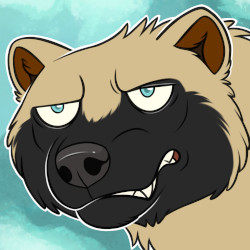
Adding Orders
Having our own alien Classes is all well and good, but there are around 6,450 species of mammals, 10,000 birds, 8,200 reptiles, 7,000 amphibians, and over 28,000 species of fish - and that's ignoring extinct species! To invent species based on just the information we have so far is going to leave most of us floundering, so we're going to generate more information to work with and create our own Orders. We're going to do that by listing the vertebrate Orders we see on Earth, and using them as placeholders for the alien Orders we're going to create.
So, what are Orders, again? Orders are groups within Classes. Let's focus on mammals, just for now: there are 19 Orders of mammals, which you can see listed and described here. If you would like help with this, I'm offer species development assistance either in real-time as a consultation (I call this 'Synch') or by email ('Asynch'). My price list if you are interested.
I want to include the following Orders in my alien ecosystem (I've left out a few small Orders but you can include them all if you like):
Mammals
Herding animals (ungulates)
Carnivores (I should point out here that 'carnivore' is a misleading name. While in daily speech the word means any creature that eats meat, in taxonomic terms it means a specific set of animals. While, say, seals eat meat, they're not taxonomically classified as carnivores. It's the taxonomic classifications I'm using here.)
Whales, dolphins, and porpoises
Bats
Gliding tree mammals
Insectivores
Hares and rabbits
Pouched animals
Egg-laying mammals
Seals
Primates
Rodents
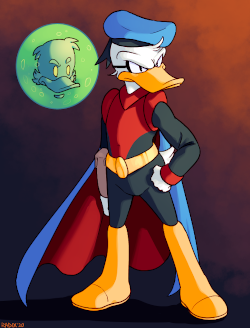
This is the point where designing your alien ecosystem could get overwhelming. Each Class has a position in Earth's ecosystem; it's not enough just to say that they live on land, in the air, or in the sea, or to say that they're carnivores or herbivores. There's so much more to each than that, and to get a fully integrated alien system we will want to address the aliens' needs to a much more sophisticated degree.
Here is a list of Orders for each of the other Classes. I'm going to sort them out equally between my five alien Classes, and then figure out what each Order would be like, based on the Class I've put them under.
The Orders we're going to work with, in addition to the mammal list above, are:
Birds
Cassowaries and emus (includes ostriches, kiwi, and the extinct elephant bird)
Ducks
Pheasants
Pigeons and doves
Cuckoos
Nightjars
Cranes
Waders
Penguins
Pelicans
Vultures
Raptors
Owls
Hornbills
Parrots
Passerines
Full list here.
Reptiles
Crocodilians
Turtles
Lizards and snakes
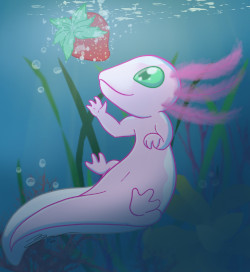
Amphibians
Tailed amphibians (salamanders)
Full list here.
Fish
Hagfish and lampreys
Sharks and rays
Anglerfish
Seahorses and pipefish
Pufferfish and boxfish
Catfish
Toadfish
Eels and morays
Sardines and anchovies
By the way, the fish list was tricky to compile, partly because there are three Classes for the animals we casually call 'fish'. However, the above is a serviceable list given the project we're working on. Full list of bony fish Orders here and list of key 12 Orders here.
Sorting the Orders
I put each of these Orders under one of my five Classes. Here are my sorted lists:
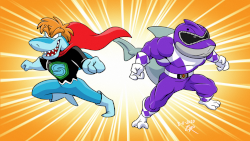
Wabl'o poba
Herding animals (ungulates)
Insectivores
Primates
Pheasants
Waders
Owls
Turtles
Sharks and rays
Toadfish
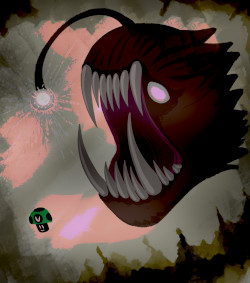
Cob'li po-fea
Carnivores
Hares and rabbits
Rodents
Pigeons and doves
Penguins
Hornbills
Lizards and snakes
Anglerfish
Eels and morays
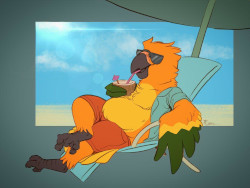
War'col begla
Whales, dolphins, and porpoises
Pouched animals
Cassowaries and emus (includes ostriches, kiwi, and the extinct elephant bird)
Cuckoos
Pelicans
Parrots
Frogs and toads
Seahorses and pipefish
Sardines and anchovies
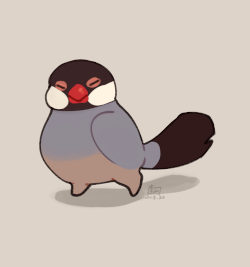
Pogi'fula
Bats
Egg-laying mammals
Ducks
Nightjars
Vultures
Passerines
Tailed amphibians (salamanders)
Pufferfish and boxfish
O'fur-hai
Gliding tree mammals
Seals
Cranes
Raptors
Crocodilians
Hagfish and lampreys
Catfish
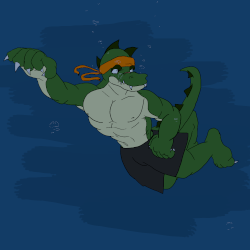
Now we need to cross-reference the qualities each Class has with the Order I've listed under them. Let's start with the wabl'o poba!
Wabl'o poba
Our Classes already have certain characteristics, and we need to look at these in light of the survival challenges our Orders face. The wabl'o poba's characteristics are as follow:
"A broad group of warm-blooded creatures. They mainly have bare skin, although this varies greatly from one species to another. They can be smooth, rough, or wrinkled, and have thick 'warts', bumps, or horns. The vast majority of species live on land and lay hard-shelled eggs."
So, how does this relate to each of the Orders?
Herding animals (ungulates)
I'll happily have tough-skinned, warm-blooded herders on my alien planet! So far that doesn't look too exotic, but the fact that they're egg-layers makes things interesting. On our world, ungulate babies ca usually walk, and run, from a few minutes after they're born, and with good reason: there are predators about! Therefore, their eggs need to be well-protected.
Chances are, their bodies will need to be different, to make egg-laying more plausible.
Insectivores
Again, warm-bloodedness fits nicely here. Insectivores tend to be small and voracious. If I'm going to stick to my idea of them having skin, then I wonder if they'll end up looking like naked mole-rats, which admittedly look very alien. What if their skin is so tough that even if a carnivore bites them, they have a hard time getting through that skin? I can go with that. Pretty brutal for the poor insectivore, but c'est la vie.
Again, laying eggs seems plausible enough. While platypi aren't insectivores, they're built broadly like them: squat and low to the ground. I think we have our first clue about how these creatures will look!
Primates
How could I be anything other than delighted to see monkeys and apes in my ecosystem? Let's dial them up a bit. Tough skins may help them to live in the trees, but right now I want to leave that as an incomplete thought until I can pay more attention to them. Laying eggs is going to be potentially difficult. Birds manage it, and admittedly some great apes build nests, but that's more for the sake of bedding than containing a clutch of eggs. I might have these guys be ground-dwelling. Let's see.
Pheasants
Pheasants present a new angle: they're domesticated. Do I want there to be a dominant species on my world, capable of harnessing prey species like the pheasant, or perhaps capturing it to enjoy it for its ornamental properties? Why not?
My 'pheasants' will not have feathers since actually, they're wabl'o poba, so these guys have skin. Can skin be ornamental? I talk about that in this blog post about creating colourful animals. They're also egg-layers. I wonder if that contributed to them being easy to harness by my dominant species? I'll look into that more in my blog post about about creating intelligent species.
Waders
Well, I don't see anything too exotic here but I wonder what it's like having ordinary skin if you spend so much time around salt water and sand?
Owls
Skin on owls? Hmm. At the moment this feels like a non-starter but let's see what happens further along the development process.
Turtles
Similar story here. Turtles do indeed lay eggs and have something between skin and scales. Some, like I said before, aren't even really cold-blooded, so this may be a non-starter too, but let's see what happens later.
Sharks and rays
Ditto.
Toadfish
I just looked up toadfish to get some clues about what to do with these guys. They listen for predators and make noise from their swim-bladders, so while I can't do much with that right now I'll keep a note of it. I like that theme around sound.
So that's our wabl'o poba sorted out, at least for now. There's still a lot of work to do with them, but that's okay - we have our initial thoughts down. Now onto the cob'li po-fea.
Cob'li po-fea
Our description of the cob'li po-fea says:
"A group of primarily live-bearing, cold-blooded species. Most have feathers, although these vary greatly from one species to the next: you can find ones that assist with flight, gliding, or assisted ruddering while running; short-quilled ones that act like rough fur, smooth ones for a semi-aquatic lifestyle, and decorative ones for display."
So let's use that to work out how we can tweak the below creatures into something alien and intriguing!
Carnivores
Feathery carnivores are too good an opportunity to miss out on - I look forward to seeing those! It's going to be fun working out how cold-blooded predators manage to hunt. It's not impossible: crocodiles warm themselves in the sun and rely on their reaction times and tendency to snap their jaws as a speciality, and there are many more examples in the animal kingdom if we know where to look.
Hares and rabbits
Similarly, the classic prey animals like rabbits are going to have a hard time putting on a burst of speed. Or are they? Basilisk lizards are famous for being able to run so fast that they can run on water. Seems like speed isn't going to be the deciding factor in any predator-prey arms race.
Rodents
Ah, rodents. Mostly tiny, and famously open-rooted (as in, their incisors never stop growing). Do they still use those teeth on nuts or other plant material, or do they use them to feast on eggs much larger than themselves?
Pigeons and doves
A group of highly domesticated, sometimes tamed, species in real life. There's a certain amount of symbolism - or at least, socio-economic association that comes with these birds. Pigeons are a symbol of urban decay, while doves are known for adding aesthetic flair to upper-class homes. I wonder if I might include similar details in my finished work?
Penguins
Live-bearing penguins. I wonder. Nothing much is jumping out at me about this, but we'll see. I know that live-bearing animals that live near either pole must protect their newborns - or their newborns must be capable of keeping themselves warm from the start, but cold presents different challenges to anything cold-blooded. This could be an intriguing challenge.
Hornbills
Big (usually, at least), beautiful birds. These are going to look stunning in my world, regardless of anything else! aside from that, these creatures are monogamous, and several species wall themselves up inside holes in trees to keep themselves and their chicks safe. I think that's a charming detail that I might find a twist on when developing this group of species further.
Lizards and snakes
Snakes are wonderfully unique-looking creatures already, and cold-blooded, of course. For them to be live-bearing instead of egg-laying doesn't seem like a significant shift, but... feathers? This could get interesting! What kind of lifestyle would they need to have, that feathers would be suitable? I'll check this out later.
Anglerfish
These guys are named and known for their ability to lure their prey in close, and have a pretty unique look to boot. So this is going to be a feathered version of the same. I imagine feathers could make pretty good lures, and birds of paradise have the kinds of feathers I'd imagine that could be great lures - with little flares at the ends, that kind of thing. I think that's the direction we'll be going with these guys!
Eels and morays
Feathered eels! These could be fantastic!
War'col begla
So that's that Class sorted. Onto the next! We previously described the war'col begla as:
"A widely-varying group. They have fur - everything from rough, thin bristles to the fluffiest, luxurious pelt. Most species in this group lay eggs, and their combination of warm-and-cold-bloodedness has allowed them to live in most environments."
Let's see what we can make of this list:
Whales, dolphins, and porpoises
Fluffy whales are definitely an appealing prospect! They'd need to be mostly aquatic or marine, though - there's surely no way a whale or dolphin could manage on land.
Pouched animals
Potentially, this group will give us cold-blooded, or partially cold-blooded, animals. I want to look into the implications of cold-bloodedness to get more insight into what survival challenges these may face. Having a creature that carries its eggs around with it will be unusual, though.
Cassowaries and emus (includes ostriches, kiwi, and the extinct elephant bird)
Not much to say here, especially since emu feathers seem to be so fur-like anyway.
Cuckoos
If the war'col begla is generally warm-blooded and fluffy, then I'll guess that the mothers of most species tend their eggs closely. But that may not be true. I wonder what challenges these 'cuckoos' face when trying to install their eggs (or young, perhaps they buck the trend and are live-bearing?) in another's nest. Or pouch.
Pelicans
Potentially these are going to bristly little bastards with big mouths and bigger throats. I'm up for that!
Parrots
Parrots are known for their colouration, so given that this incarnation of them is going to be furry instead of feathered, their colour pallette may be much more limited. That said, I like the idea of these creatures being mimics.
Frogs and toads
Frogs are defined by their short bodies, a lack of a tail, and by being mostly carnivorous. I'd like to see a fluffy version of that!
Seahorses and pipefish
The fact that this group is almost certainly egg-laying means that we can take advantage of the 'seahorse dads' dynamic! I've always found the way they curl their tails around things to anchor themselves quite charming so I want to see if I can include that in this species. Something less often mentioned about seahorses is their armour, so perhaps we can look at that too.
Sardines and anchovies
Sardines and anchovies' defining feature is that they breed in huge numbers, which cements their role as a prey fish for many species, large and small. Their tendency to ball together into a shoal rather than scatter helps this process along, so I'd like to take advantage of that dynamic in my alien equivalent.
Pogi'fula
We've got some interesting dynamics to think about in the above! Let's move on. The pogi'fula are:
"Entirely aquatic. They possess gills and are warm-blooded. (since this raises the obvious problem of body heat conducting away from the body, I'll look into that when I design these creatures further). The texture of their skin can vary a great deal, but they never have feathers or fur."
Before I go on, I want to point out the issue with being aquatic and warm-blooded. A small number of fish are warm-blooded, and here's a bit of information about why. In short, warm-bloodedness helps speed up reaction times and metabolism, but the animal needs to keep itself moving so that it doesn't become too chilled.
Bats
First up, our world's flying mammals! I'd love to see what these creatures would look like underwater and what it would take for them to be able to 'fly' like that. Given the information about about warm-bloodedness underwater it makes sense that they'll need to keep flapping to keep their body temperature up.
Egg-laying mammals
Let's see... there may not be much to say about these creatures. I may end up moving them to another group or deleting them entirely.
Ducks
Technically, this group includes ducks, swans, and geese. They can be found in fresh or saltwater, and are mostly aquatic. For the purposes of this worldbuilding project they're going to need to be featherless and to have gills, but I do like the idea of having some kind of life-form like this that bobs around on the surface. Ducks, swans, and geese are also pretty iconic creatures, so to give them some kind of cultural significance may be fun!
Nightjars
Oh, how I'd love to have something like this! Nightjars in our world are nocturnal, dull-coloured, and have long wings and short beaks. A nocturnal aquatic thing could be interesting but I wonder if the sentient life of my world will see them very often?
Vultures
Undersea scavengers that have to keep moving! These could be fearful things indeed, especially if they have an adaptation like some vultures do, to have thick skin on their heads!
Passerines
Now, these could be interesting! The passerine group of birds is the biggest group with many thousands of species. The fact that they perch is a sweet addition to the development we're doing here - I did mention before how much I love that anchoring thing seahorses do. I wonder how these guys would anchor themselves? One thing's for sure though: they'll need to keep moving to remain warm enough.
Tailed amphibians (salamanders)
There may not be much I can do with these. They'd be more active than real-life salamanders, but would that be interesting? Do they need to be interesting if they can act as background detail? Hmm.
Pufferfish and boxfish
Pufferfish present something of a problem. I welcome details like this because they can give us all sorts of challenges to work around, but it's this: pufferfish are slow-moving, and protect themselves not by swimming away, but by bloating themselves up to make their spines stand on end.
Here are the problems: most pogi'fula are warm-blooded so need to keep moving. Solution? These could live purely in shallow water in hot parts of the world. They could favour fresh water instead of salt, to make sure the cold, deeper water never mixes with their warmer water.
Spines imply scales, but these guys have skin, not scales. perhaps I'll want to adjust that, I'll see.
O'fur-hai
That's that group finished with! One more, and then we're done! Here's how I described the o'fur-hai:
"Complex creatures. Overall, they're warm-blooded egg-layers that live on land, but have an aquatic larval stage. They do not transition entirely to a terrestrial lifestyle and must remain close to water to allow their skins to breathe. They generally have fur (with everything else strange going on with this group, fur may be a step too far, but hey, the largest animal ever to live - the blue whale - lives underwater but needs to breathe air, so I'm down for contradictory species. I'll keep an eye on how well fur fits into the overall theme, though)."
Including fur in this list could get interesting. Our list of species to match to this description is:
Gliding tree mammals
Amphibious, and living in trees. I'm happy enough to go with that! I wonder if they go chasing mist and fog to keep their gills and fur moist?
Seals
Egg-laying seals? Doesn't sound too interesting yet, but let's see what I can do with this. I wonder if it may be worth making them poisonous?
Cranes
Cranes already love water, and to bond them to it more closely would be easy enough. They're also associated with youth and longevity in our world, so I'd like to look at preserving symbolism like that in my ecosystem.
Raptors
Raptors - birds of prey - are mainly classified for their ability to hunt animals relatively big compared to themselves. They also have excellent eyesight. If I cross-reference that with the details I'm trying to include here, then my 'raptors' may look more like bats. Their skins may be somewhat fragile for their lifestyles however, so I wonder how they manage that? Perhaps they can knock out their prey very quickly? Perhaps they swarm their prey or go for helpless prey? We'll see.
Crocodilians
These guys live quite an amphibious lifestyle anyway, so since amphibians are the closest proxy to o'fur-hai, I'm seeing a connection. While most amphibians are pretty small, there are bigger ones, the biggest being the goliath bullfrog. Why not have something croc-sized? Imagine the patterns on their skins!
Hagfish and lampreys
Hagfish are best-known for generating slime and tying themselves in knots. This is harder to pull off on land, but may be helpful for the survival of their larvae. Aside from that, a land-living eel sounds quite a lot like a snake, so I may move the hagfish and lampreys to another group.
Catfish
Last but not least, catfish! There's not all that much to interest us in their taxonomic classification, but they're very important to the fishing industry and easily-recognised by their 'whiskers'. They can be pretty big and heavy, so may find living on land quite difficult.
To Finish
That was a lot of work. If you've been designing your own ecosystem, well done getting through this part! Next week we're going to make some adjustments and then mesh this ecosystem together.
Want to keep up to date with our blog? Sign up to our newsletter.
Credits
Title image by Synfull and used with their kind permission.


